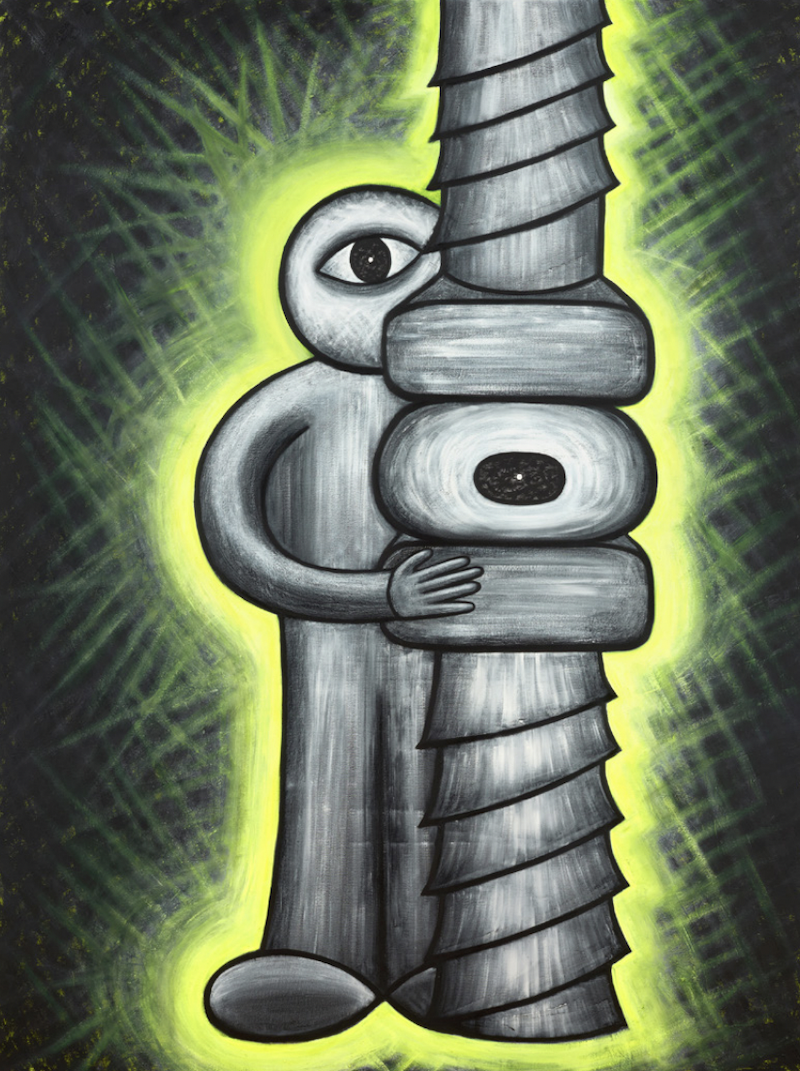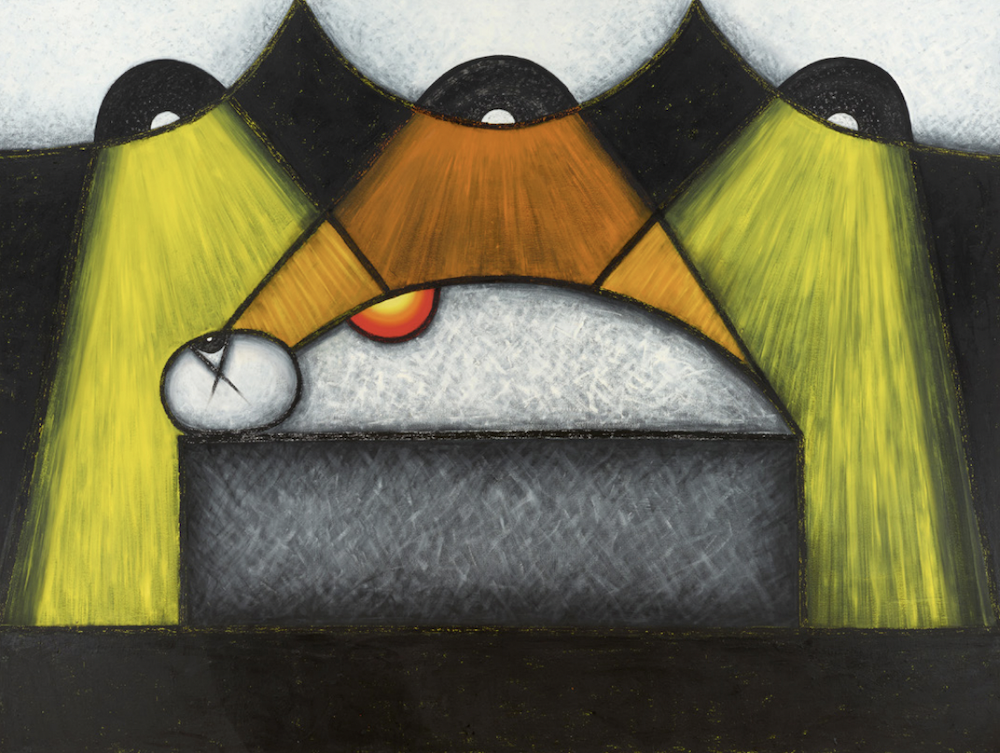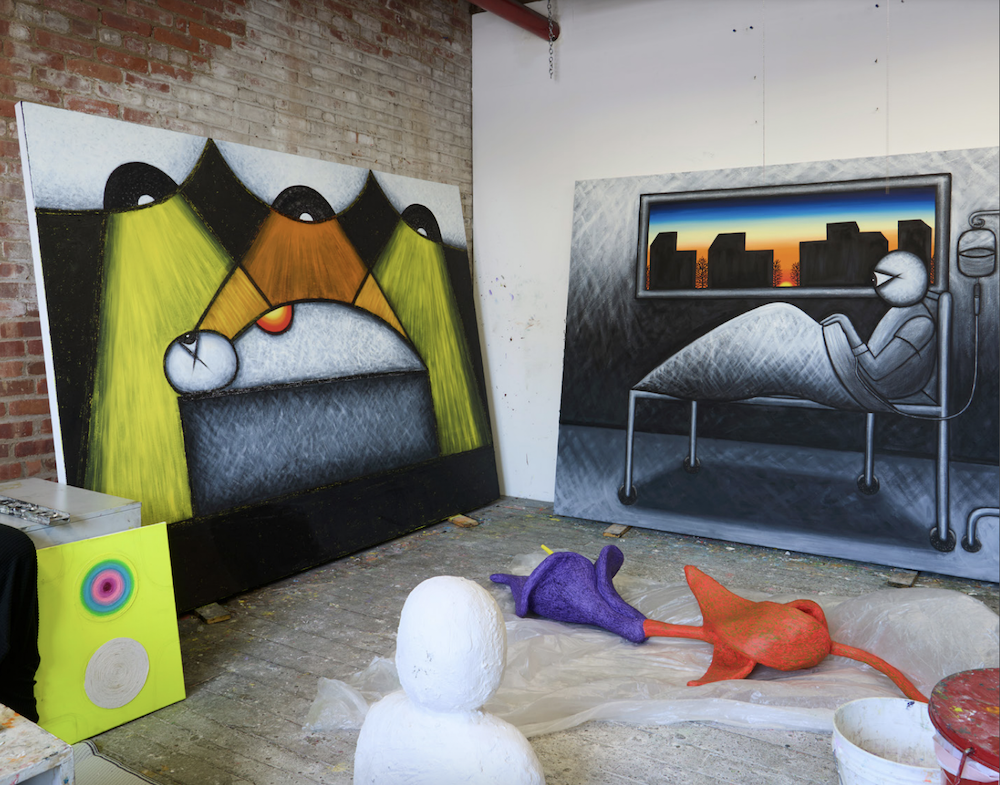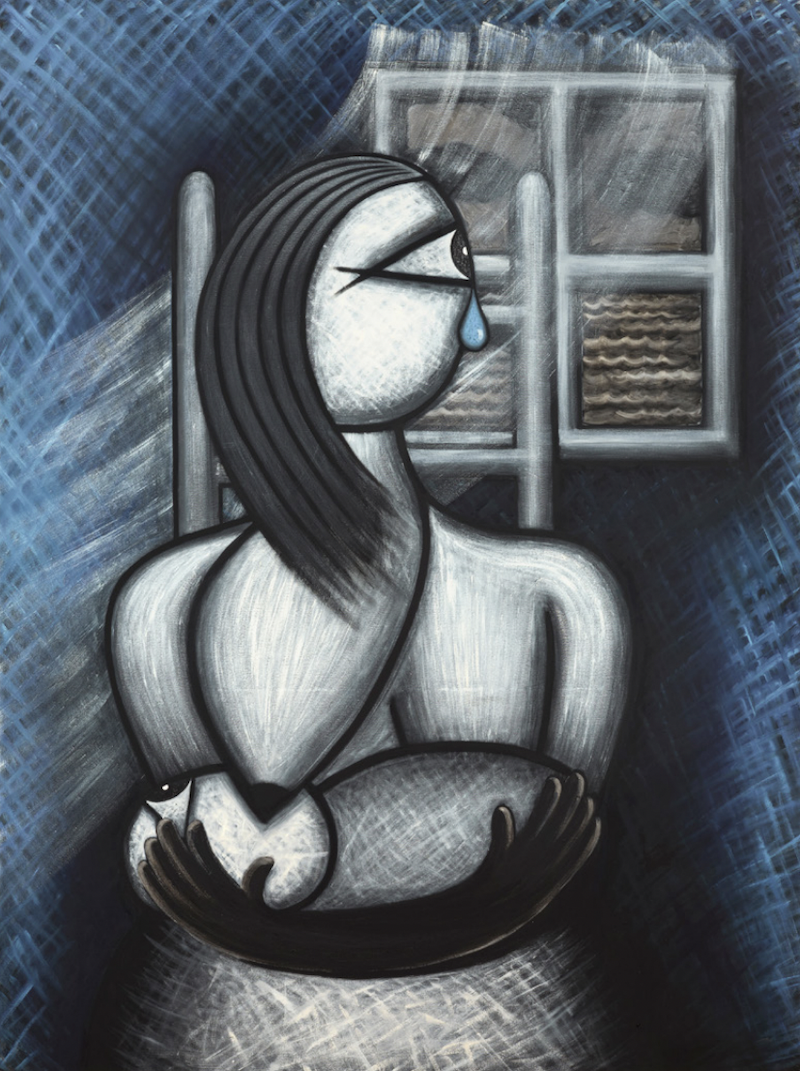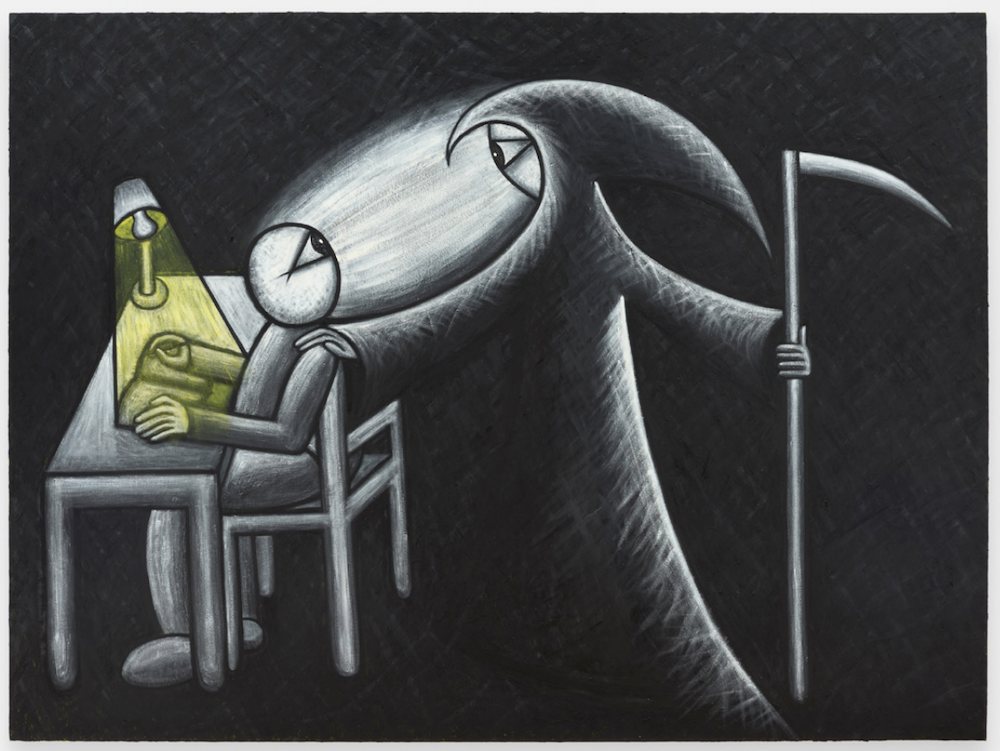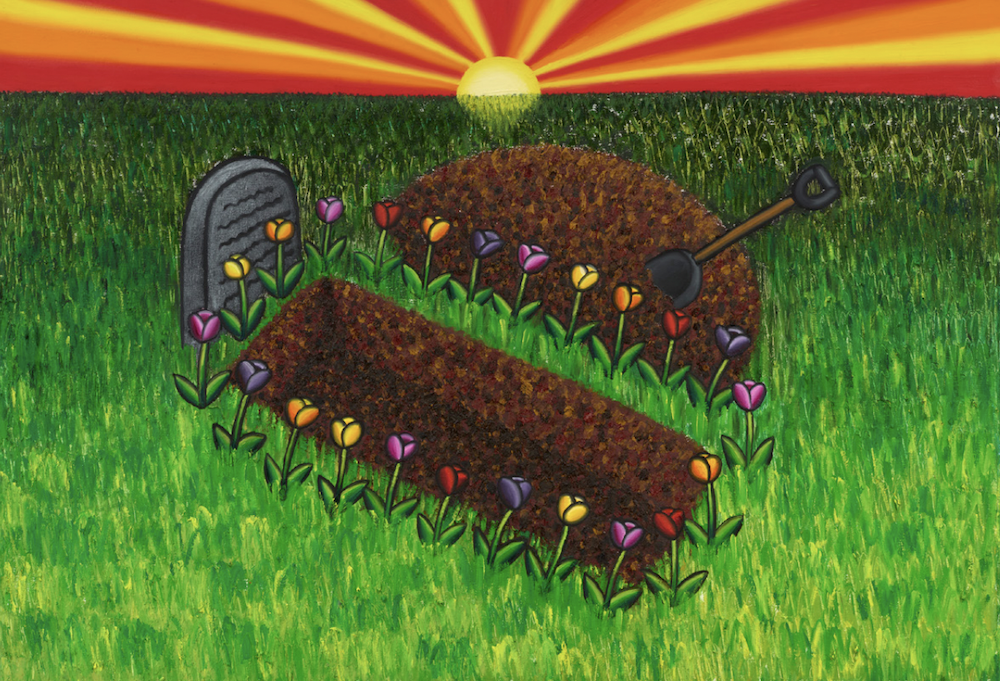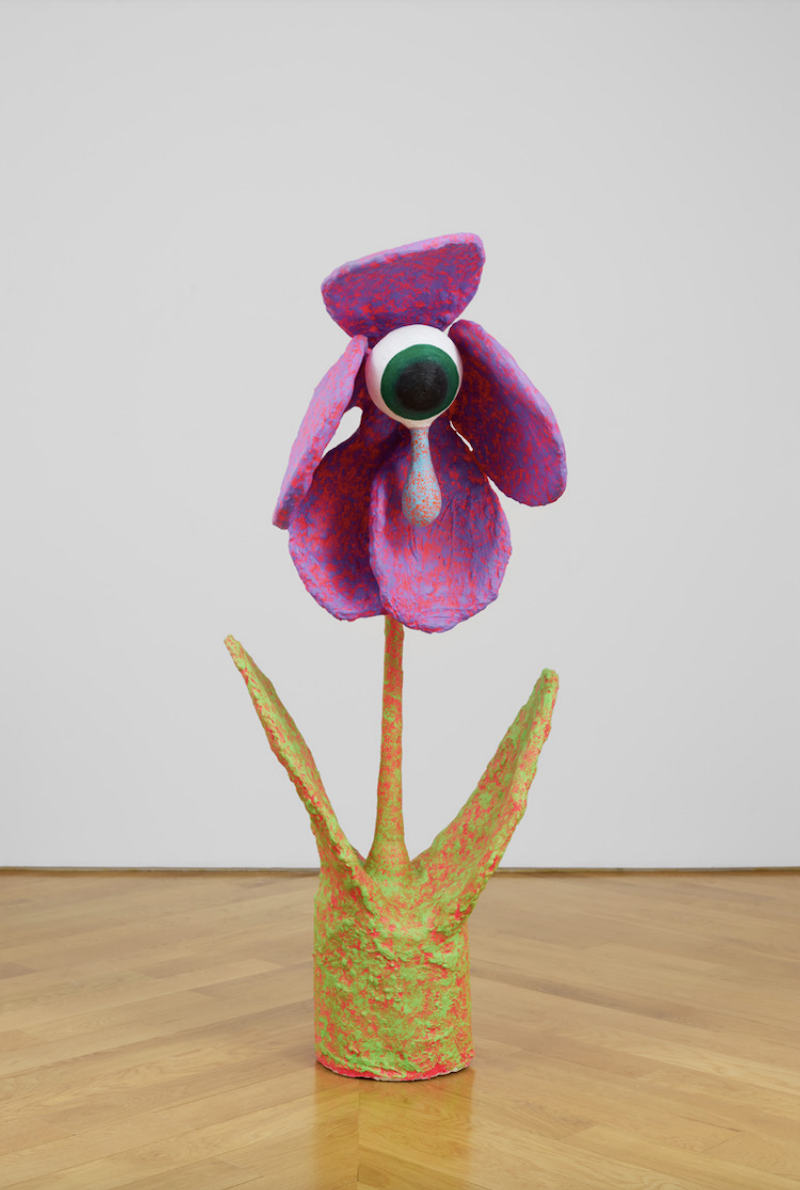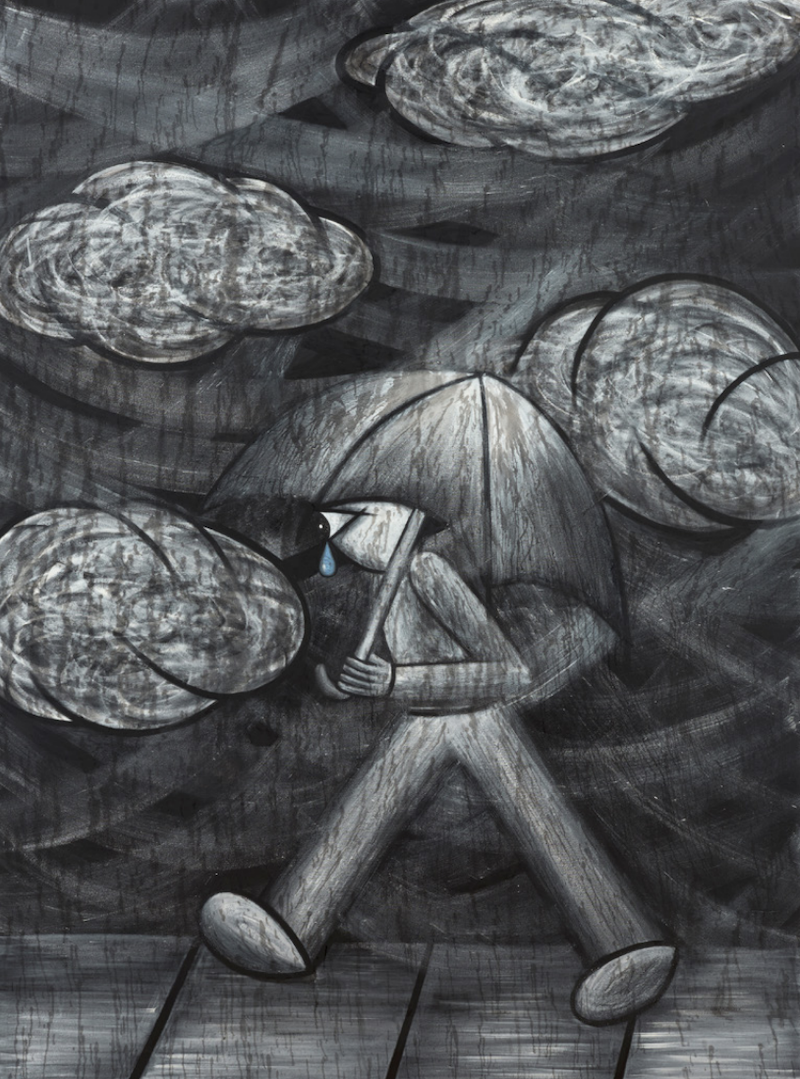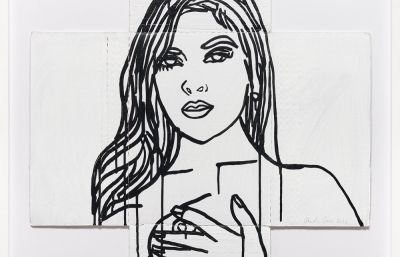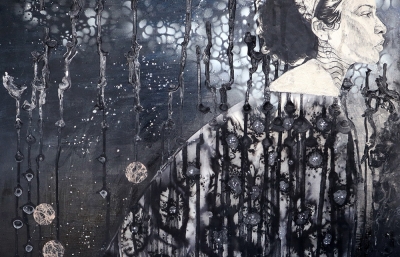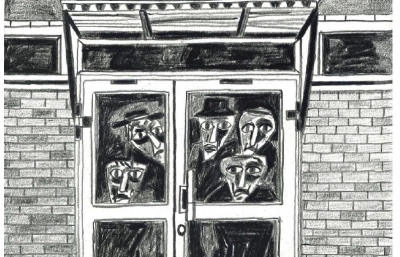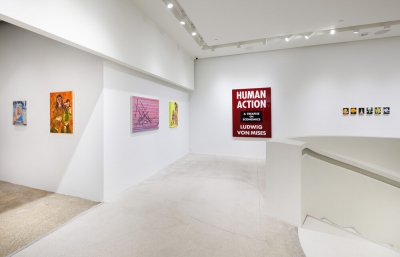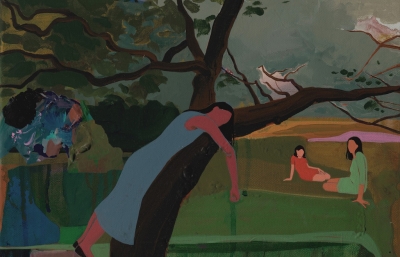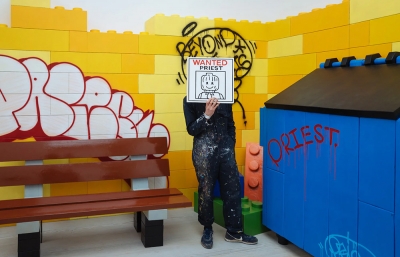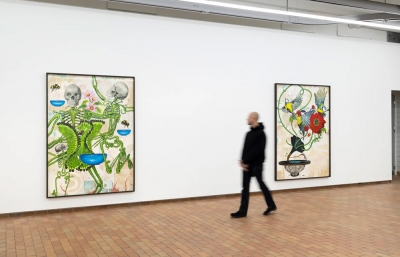Anton Kern Gallery is pleased to present Hope Springs Eternal, Brooklyn-based artist Hein Koh’s first exhibition at Anton Kern spanning the first and second floor galleries. The exhibition will foreground a new series of works depicting cyclopean figures: one-eyed beings who observe but cannot speak. The characters are full of human pathos but lack noses, mouths, or ears—their faces distinguished only by a large and watchful eye. Despite their facial shortcomings, in Koh’s world, these subjects participate in mundane moments of waiting, wondering, and enduring, such as being at the doctors, or caught in the rain.
In a Gustonian manner, Koh’s cartoonish characters offer a semi-self portrait of the artist, coming out of the routines of her life over the last challenging year. Koh, like the subjects of her paintings, has had many appointments during this time. She has also cried, mothered, been to the hospital, grieved a friend’s death, all things depicted in the paintings—and she has confronted her own mortality. Koh’s figures and exhibition as a whole are deeply informed by her recent breast cancer diagnosis and treatment. In making the cyclops, gesturing out its uncomplicated forms on canvas or slowly sketching it from her studio couch, she was able to process, preserve, and finally move forward from this painful experience. In addition to Koh’s tragicomic figure, the exhibition features: floral paintings inspired by the artist’s recent interest in gardening; two plaster sculptures; a handful of memento mori paintings; and approximately 20 pencil and charcoal drawings.
The 15 paintings featured in Hope Springs Eternal are predominantly black and white (with inflections of neon-yellow, orange, or blue), and half feature the eye-person prominently. This round-headed figure is an old friend, featured in works from 2015 and now re-emerging in Koh’s practice. Its inception came from a similar experience of spiritual searching. After giving birth to twins that year, Koh started to process her experience through drawing. The routine of drawing eased fears related to the chaotic, identity-shattering experience of motherhood, and the mysticism and stress of having two newborn twins. Cyclops manifested itself then, in those post-hospital scrawls. In a similar way, the experience of being diagnosed with breast cancer necessitated processing and a need for “paring down.” This made room for cyclops to re-appear, recast as the artist’s primary symbol during this healing period.
Koh’s grayscale paintings of one-eyed figures are featured on the first floor. When assembled together, the repetition of large, backlit bodies in a limited palette recall the paintings of Los Angeles-based German artist Silke Otto-Knapp, who passed away in 2022 from ovarian cancer, and, in particular, her 2020 exhibition In The Waiting Room at the Renaissance Society. Otto-Knapp’s silhouetted, faceless people appeared over and over, in different groupings and poses, expectant, hoping to proceed into the next part of the plot. Likewise, Koh’s enigmatic figures are caught in moments of waiting, unsure of what is to come. In two of the works, the figures are situated in explicitly clinical settings. Room With A View features the figure depicted in profile, looking off the picture plane. Everything in its immediate vicinity–the stretcher bed, the IV drip, the lumpy, disposable bedding–is black, white, and gray and painted with a heavily cross-hatched technique. Outside, a brilliant sun sets or rises, making the room feel a bit brighter. In Radiate, 2024, a round body rests upon a rectangular “bed.” Ceiling-mounted lights that explicitly recall breasts or eyes emit yellow and orange rays upon the figure’s chest. The one eye looks up into washy strokes of color. Radiate offers a poignant meditation on non-corporeality, and, as the work’s title suggests, radiation as a treatment for cancer.
Other works in the show also speak to Koh’s cancer prognosis and her corresponding emotional response in an abstracted way. Mammo, 2024, presents the figure looking ahead, peering forward from behind a large mechanical object. Corrugated and sharp, the object resembles a vise, consisting of two parallel jaws with one of the jaws fixed and the other movable by a screw. In Koh’s vise, a circular form, again very breast-like, is the workpiece, firmly held, squashed into place, unmovable. This gadget recalls Lee Lozano’s tool drawings, which investigated issues of gender and the body. Both artists’ tools seduce and repel us simultaneously. Koh’s work has always dealt with dualities—from dark and light, naïveté/innocence and the melancholy that comes from lived experiences, to sex appeal and provocation, and more. And in Mammo, it’s unclear if the vise is helping or hurting the figure’s breast, an intentional ambiguity. Koh’s deft handling of duality is further exemplified by her memento mori paintings; in her trio of tulip paintings; and in the painting for which the show is named. The most common motifs deployed in memento mori works are skulls and wilting flowers. Either or both appear in four of Koh’s featured paintings: a few petals fall from an otherwise lively rose bouquet, which is depicted against a backdrop of scratched out black; and a big bunch of purple calla lilies, a flower that has long been a symbol of early death and resurrection, look worse for the wear but continue to hold on. Similarly, three tulip paintings (with the titles Bloom, New Beginnings, and Night) nod to the artist’s newfound green thumb and meditations on death. During treatment, the artist became fascinated with gardening as she watched her plants in various stages–growth, bloom, and decay. In a similar vein, the exhibition’s titular work is a painting of a grave illuminated by a rising sun. Hope Springs Eternal is arguably the most colorful piece in the show, with brushy green grass, clumpy brown dirt, and flourishing tulips. Though a grave has been dug, indicating a recent death, the bright light of a new day provides the viewer with a glimpse of hope, as the world is still able to produce new life, new blooms, new energy. Another day begins.



